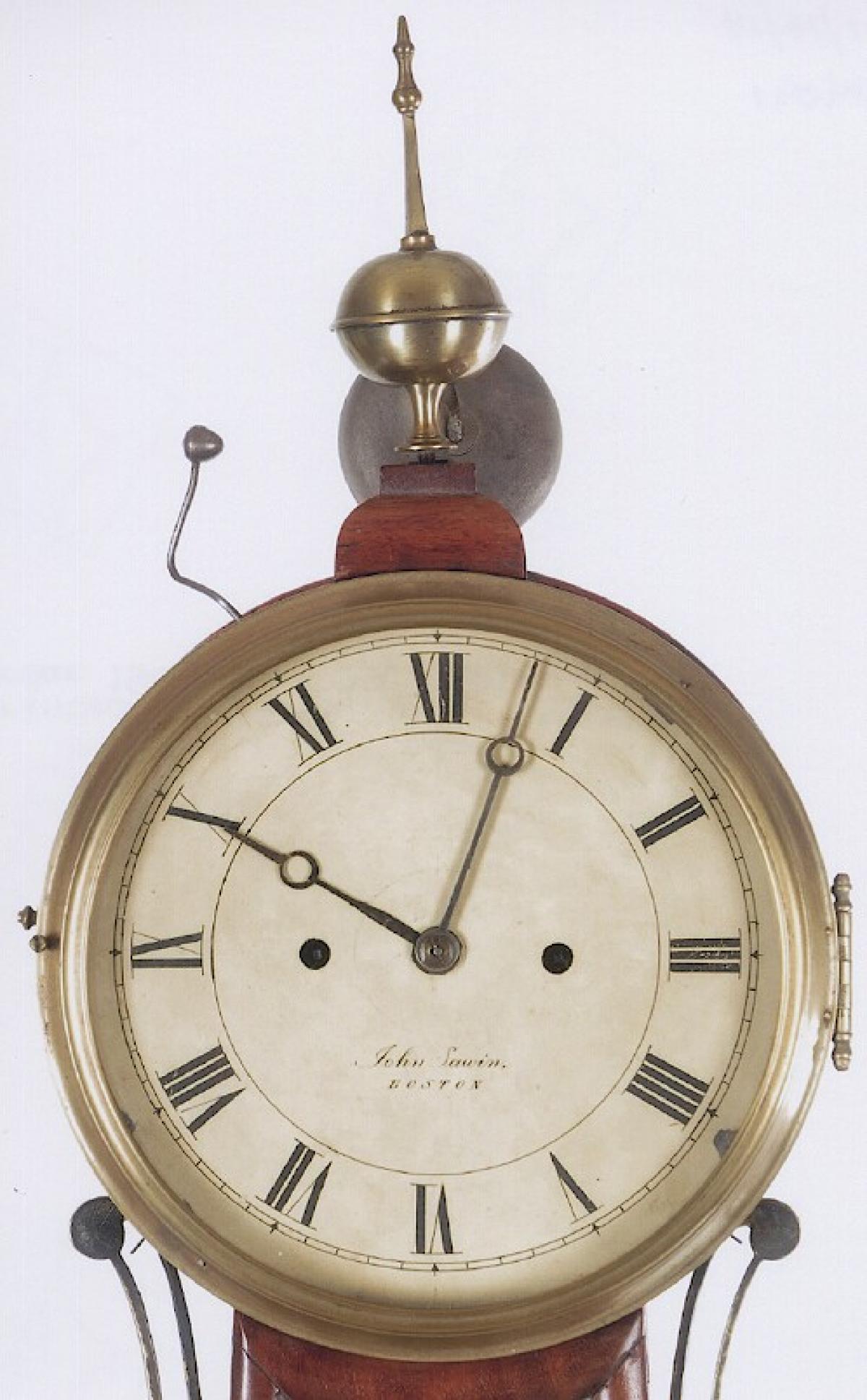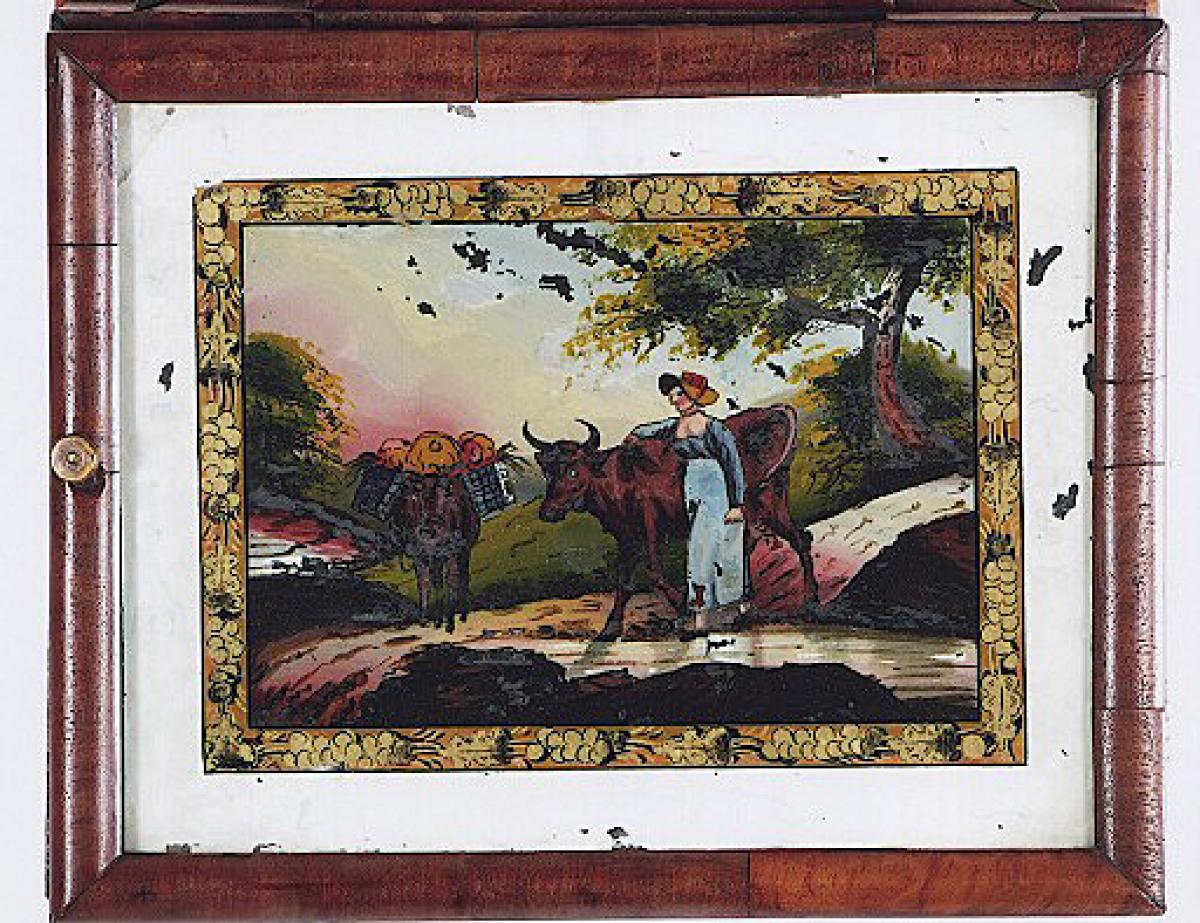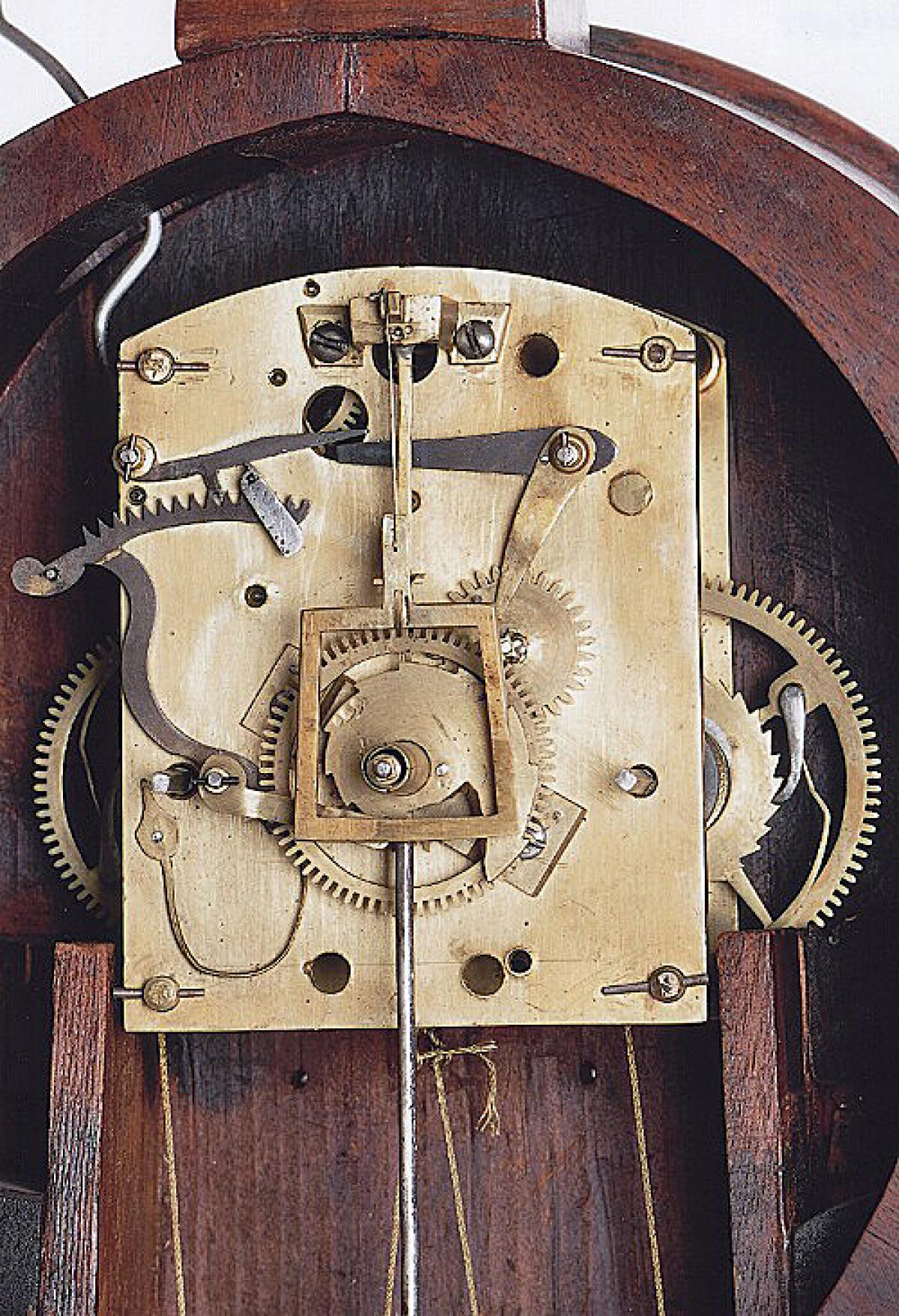John Sawin full striking wall clock. Boston, Massachusetts. 214091.
Full-striking banjo clocks are very difficult to find in today’s marketplace. This is because they would have been much more expensive to manufacture than the standard timepiece version. In addition, they required an additional weight to power the strike train. This made the clock very heavy and would put the clock at a higher risk of falling off the wall if not appropriately secured.
This example measures approximately 34.5 inches long from the bottom of the lower box to the top of the center finial, 30 inches without the finial, 10.25 inches wide across the lower box, and 4 inches deep. The painted iron dial measures approximately 9 inches in diameter. This clock was made circa 1820.
This is a fine example. The case is constructed in mahogany. The patina is excellent. The clock is surmounted with a brass ball and spike finial. This is fitted onto a formed plinth. Behind it, one should note the bell in a vertical mounting position. The clock strikes the hour on this cast iron bell. The dial bezel and the side arms are cast in brass. The bezel is fitted with glass. This allows one access to the painted iron dial. The Clockmaker signs this dial. The place location of “BOSTON” is also listed here. Both frames feature half-rounded moldings, which are fitted with glimpse tablets. They are painted from the back in pleasing colors and are original to this example. The throat tablet features a traditional timepiece theme. The lower tablet depicts a lovely pastoral scene of a woman traveling through the countryside with cattle. A tiny crack is located in the upper left-hand corner. This section is a door that allows one access to the pendulum.
The movement is constructed in brass and features a full rack-and-snail striking train. This weight-driven clock is designed to run for eight days on a full wind and strike the hour on the hour. The brass plates are rounded at the top. They are supported by four posts located at the four corners. It is good quality. It is mounted to the backboard with screws.
Please read Paul Foley’s book, Willard’s Patent Timepieces, for a more detailed discussion regarding wall timepieces.
Inventory number 214091.
John Sawin was born in Roxbury, Massachusetts, on September 13, 1799. His parents were John Pierce Sawin and Abigail Partridge (1781-Unknown.) It is thought that he was trained as a clockmaker by his uncle, Aaron Willard. John was also related to Lemuel Curtis, who was a cousin. Throughout his career, John had several working relationships. It appears that he worked with Simon Willard in 1819-1820. He is soon listed as a journeyman working with Aaron Willard Jr. In 1822, John partnered with George Wild Dyar as Sawin & Dyar. This shop was located at 33 Market Street. This partnership lasted until 1827. John continued to make clocks independently and employed many apprentices and journeymen. The Massachusetts Charitable Mechanic Association held its first fair in 1837. John Sawin entered two gallery clocks in the competition. They were equipped with improved regulators to avoid the necessity of removing the dial. They were proclaimed to be the best clocks exhibited at the fair, and he was awarded a Diploma by this new organization. John Died on March 28, 1863, at the age of 62. He is buried in the Christ Church Cemetery on Salem Street in Boston, MA.
The number of signed Swain clocks that survive in today’s marketplace suggests that he was very successful. He advertised that he made Tower clocks and wall regulators. Wall timepieces, gallery clocks, and Massachusetts Shelf clocks have been found. John Sawin is probably best known for creating the lyre form wall timepiece.














